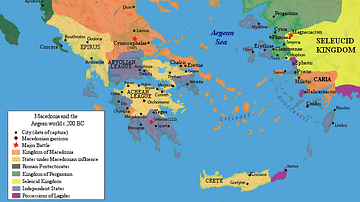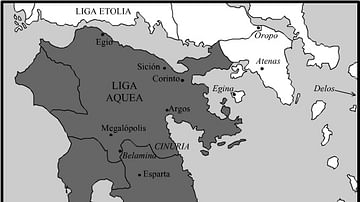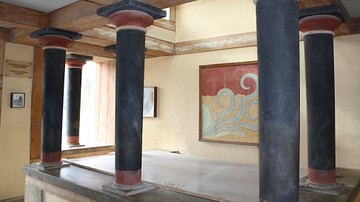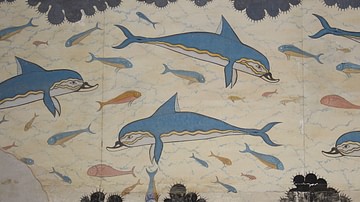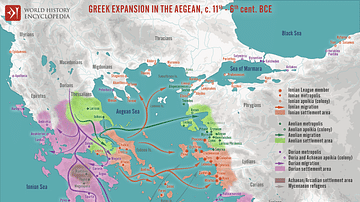Illustration
This map illustrates the geopolitical evolution in the Aegean during the Bronze Age when the dominant civilizations of the region - the Minoans and Mycenaeans- played distinct roles. The Minoans (2000–1450 BCE) on Crete were renowned for their maritime trade, elaborate palaces like Knossos, and sophisticated art, while the Mycenaeans (1600–1100 BCE) were more militaristic, building fortified citadels and expanding through conquest, including the absorption of Minoan culture c. 1450 BCE. They are also known for their involvement in the Trojan War, as reflected in later Greek epic poetry. Around 1100 BCE, the Dorian migration led to the collapse of the Mycenaean civilization and marked the transition to the Iron Age.
About the Author
Cite This Work
APA Style
Netchev, S. (2024, September 22). Aegean Bronze Age Civilizations, c. 2000 - 1100 BCE. World History Encyclopedia. Retrieved from https://www.worldhistory.org/image/19476/aegean-bronze-age-civilizations-c-2000---1100-bce/
Chicago Style
Netchev, Simeon. "Aegean Bronze Age Civilizations, c. 2000 - 1100 BCE." World History Encyclopedia. Last modified September 22, 2024. https://www.worldhistory.org/image/19476/aegean-bronze-age-civilizations-c-2000---1100-bce/.
MLA Style
Netchev, Simeon. "Aegean Bronze Age Civilizations, c. 2000 - 1100 BCE." World History Encyclopedia. World History Encyclopedia, 22 Sep 2024. Web. 15 Apr 2025.



